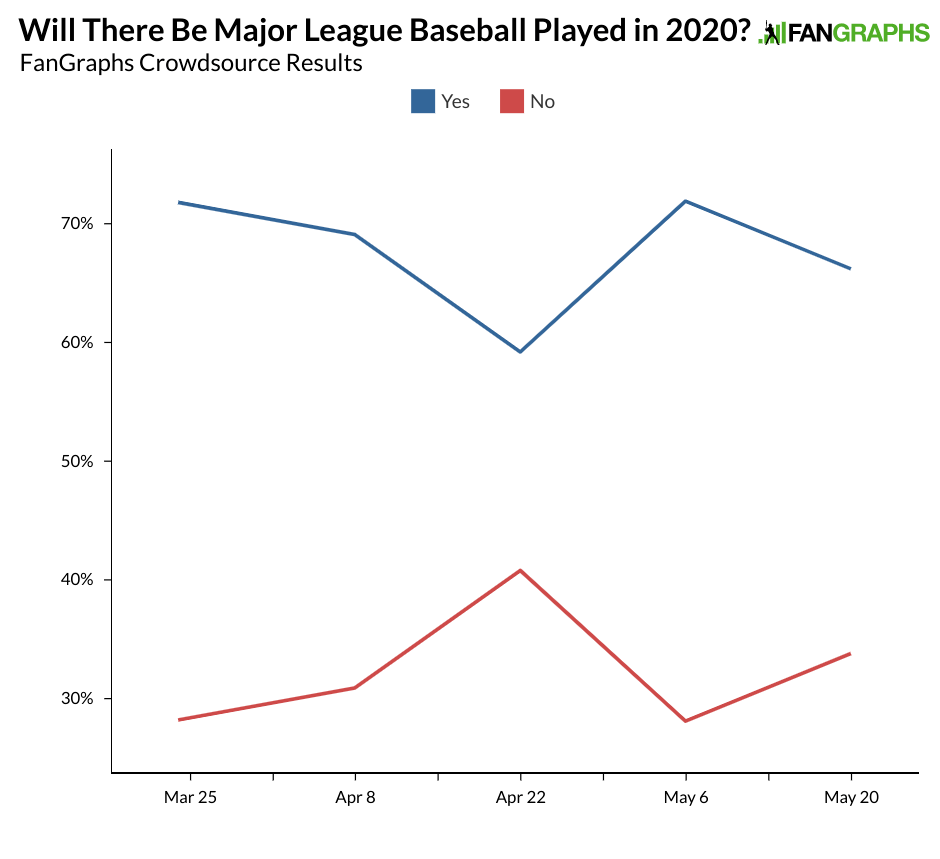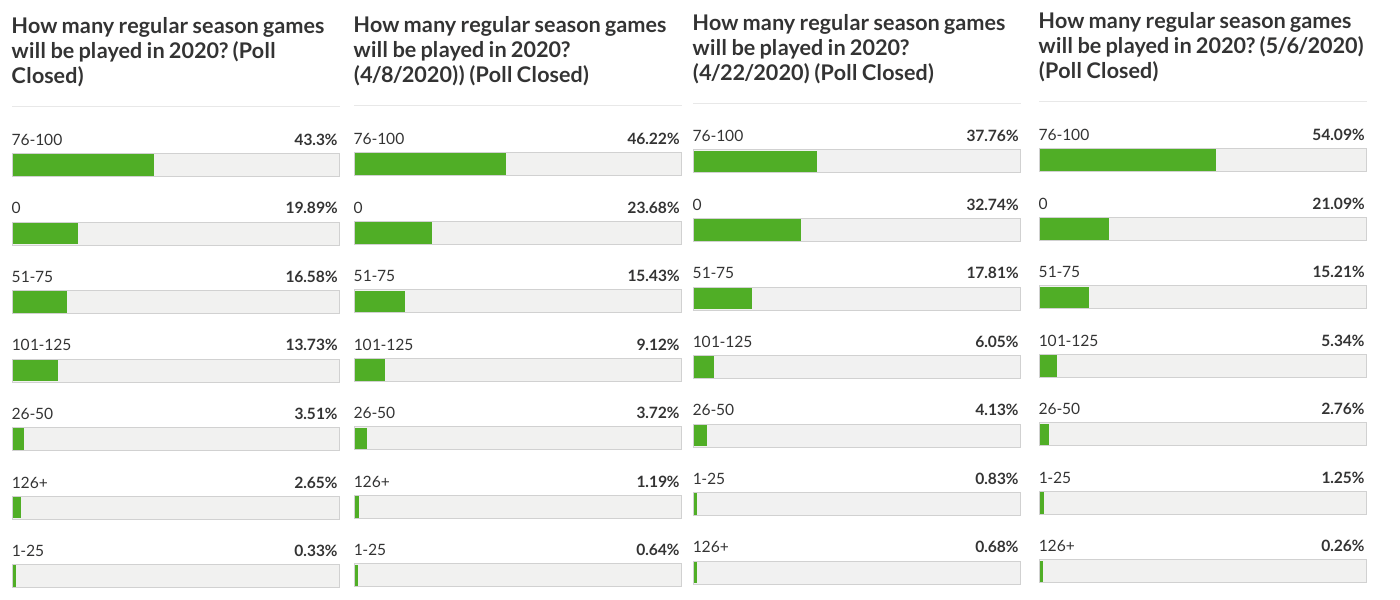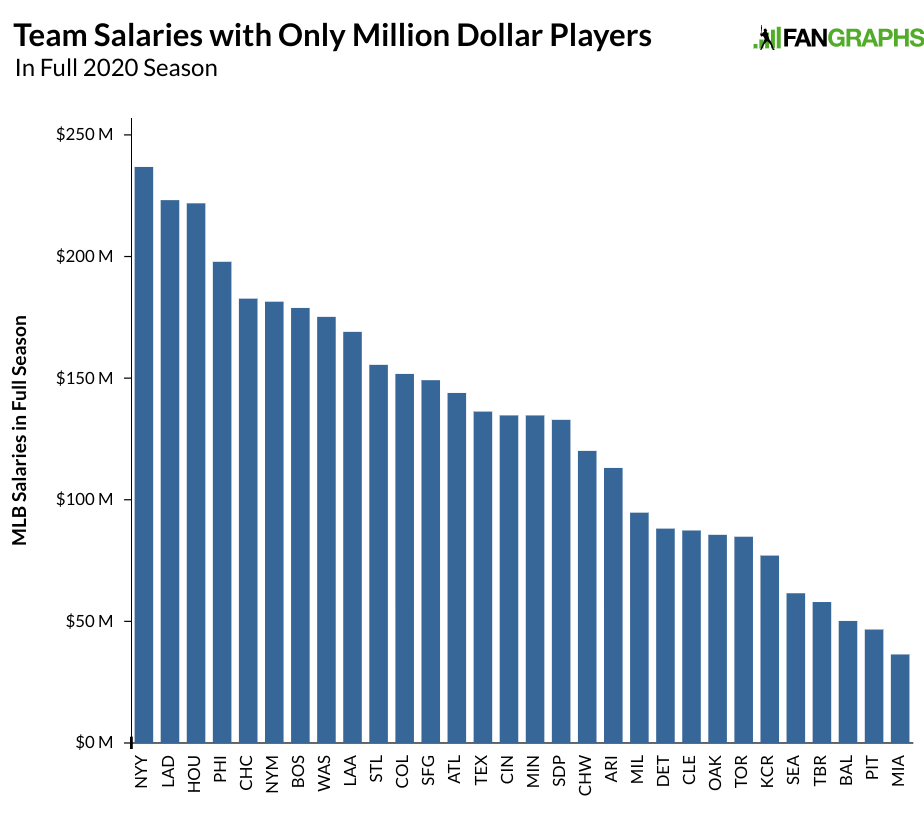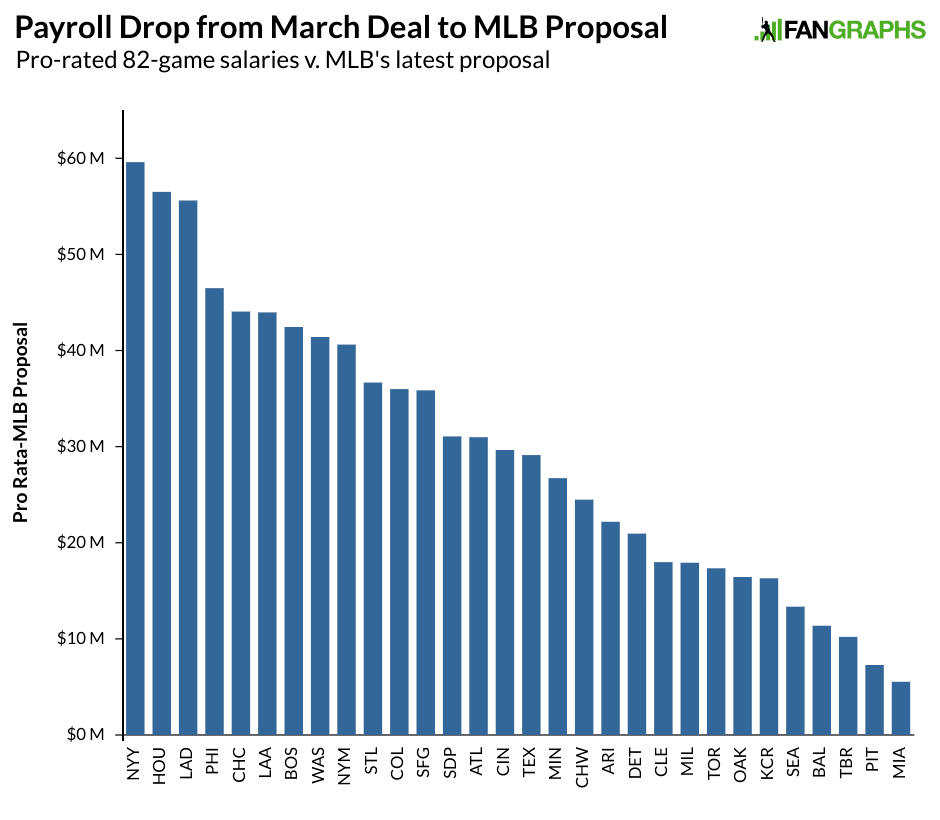What the 2020 Season Will Look Like: Crowdsource Results Round 5
Usually, these results would have been posted last week, but the holiday combined with having some other business to attend to meant a delay until today. The polls closed early last week, before the most recent news cycle of proposals began. We again received more than 1,000 responses, similar to the first four rounds. In the fourth round of voting, the results showed more optimism that some sort of baseball season would be played than in any of the three prior rounds of polling. The results weren’t quite as rosy this time, but two-thirds of the responses believed there would be a 2020 season.
Here’s how the results have tracked since late March:

We saw a couple wild swings the last few rounds, and it will be interesting to see what the next round brings, but this week has settled in between.
In terms of the number of games, here’s how the responses looked the first four rounds:

And this round:
We see 76-100 maintaining the top spot, falling a bit as zero picks up some votes. The big change came in the outlier groups: those thinking there will be more than 100 games are basically non-existent, while the 51-75 group has picked up a bunch of votes.
As for when the season will start, this will be the last poll with May as an option, though it’s not as if it was a popular choice:
These results are basically in line with the last poll, with July or Never leading the way, though certainly some of the July responses might move to August before switching to Never.
As the league’s public plans have shifted from spring training facilities to home ballparks for game sites, the crowd has shifted its answers in response:
A month ago, 60%-65% of responses thought spring training sites would host regular season games. Two weeks ago, those responses dropped around 10 percentage points and they dropped again this round, with the majority believing no regular season games would take place at spring training sites.
As for games without fans, the results mostly line up with the number of regular season games, though there’s a small percentage of the 76-100 votes above that do shift downward, meaning a small percentage of respondents do expect some games with fans this season:
As for when the season will end…
Late November was about 10 percentage points higher in the last round of voting and it appears those lost votes split between No Season and early November. It appears MLB’s stated preference of a relatively normal postseason schedule if not format has caused some answers to move a little earlier in the year.
As for that format, we’ve seen a massive shift, as the clear majority of fans believe there will be expanded playoffs this season:
Expanded playoffs has nearly doubled in terms of responses since just a couple weeks ago.
Later this week, we’ll take another crack at polling our readers. Given the spate of news across the last week, it will be interesting to see how the mood has shifted.





